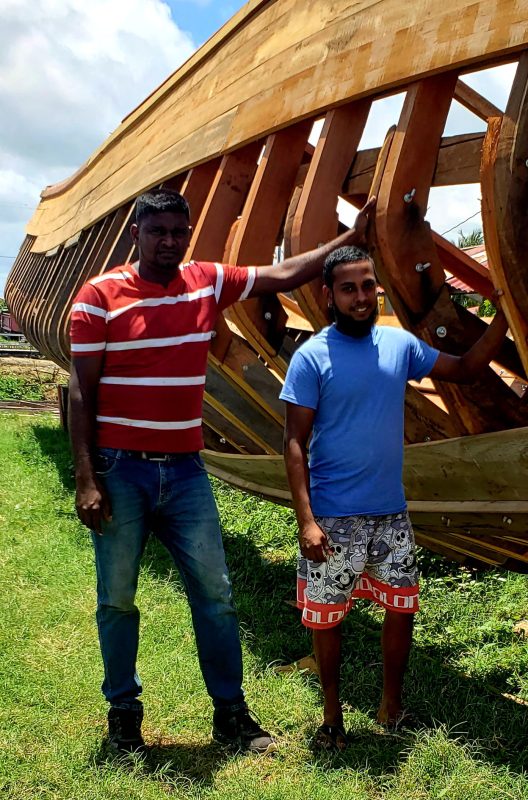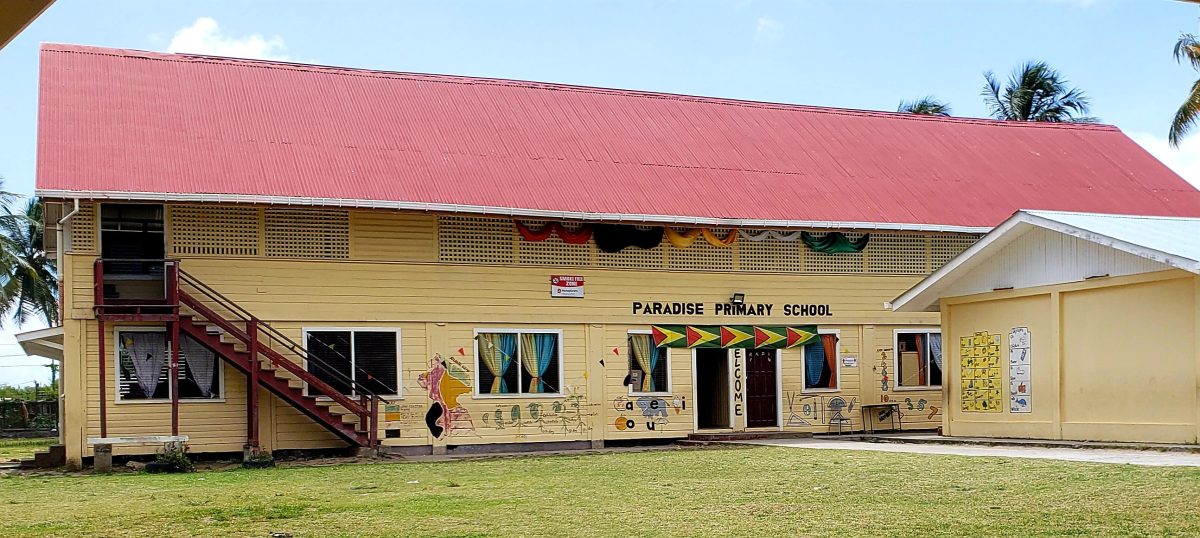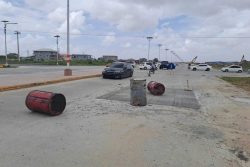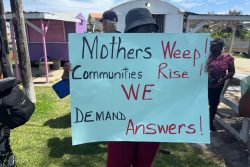Twenty years after the 2005 flood
To many on the lower East Coast Demerara, the 2005 flood felt like it was the beginning of the end as the water continued to rise on day two after January 15. It went from ankle deep to an average of about six feet in height in many homes, especially those built flat on the ground to accommodate low-income earners.
Many residents in Dazzel and Haslington housing schemes abandoned their homes and farm stocks and sought refuge with family and friends. Those who could not find alternative accommodation ended up at shelters.
Wayne Thomas, then 36, and his family, took shelter at Enmore/Hope West Primary School where they stayed for about three to four weeks before they returned home to Haslington Housing Scheme.
Thomas, then a miner, had returned home two days after the conservancy overtopped and water flowed freely onto the East Coast Demerara and Georgetown, following 30 days or more of heavy and consistent rainfall.
He said he had returned to Haslington with malaria and “lil money, no sort of big money. We couldn’t do anything or save anything because the house was flat.” There was nowhere his wife and three children could have stored anything. They lost ducks and fowls and their kitchen garden that served a means of livelihood for Thomas’s wife and children while he worked in the interior.
“It was a terrible piece of flood. When we went back home to clean up, it was real bad. While cleaning up, we found snakes in the house. The most the government gave us were two mattresses that we slept on in the shelter and food hampers. We got no flood compensation or anything like that. The school was just a place to sleep and pass the day. We couldn’t cook there. The army brought us food in morning, midday and in the evening,” he related.
Thomas was one of many in the area who lost almost all their possessions. These residents burnt most of their furniture and other items destroyed by the floods. They had to replace virtually all they lost. People who lived in higher houses were able to save their belongings.
Since then, he said, he has built a higher house in front of the flat house which is a reminder of what took place.
“The water covered the road and everything and everybody in the neighbourhood had to bail out,” he recalled.
He said many people still do not believe that the conservancy only overtopped but that there was a deliberate breach. There was a rumour that a breach was created by the gang that had broken out of the jail and was wreaking havoc in Buxton and on the East Coast.
After earning enough in the gold fields, and reinvesting in his home, Thomas decided it was time to stay with his family.
“I am now doing taxi work so I could be with my family. I done with the interior,” he said.
Paradise
At Paradise, residents from Melanie Damishana, Dazzel Housing Scheme, Bachelor’s Adventure and Paradise took refuge at Paradise Primary School, another shelter.
Garfield Joseph and his wife Camellia and three daughters lived next door to the school but they lived in a high house and were the caretaker for a family that was in England at the time. They had to wade through the water to move the furniture and other salvageable items from the lower flat to the upper flat of the building they were looking after. They could not save everything.
“We could not lift everything because of how fast the water was rising. There were snakes too. We also had to take care of two dogs too,” Camellia Joseph said.
Joseph said when he saw the water rising on the road, “I felt it was the world coming to an end. I saw the fresh water. I said something is wrong here. I said like the conservancy break. The rainfalls were like nothing we had ever seen before.”
A miner like Thomas at the time, Joseph said, he had gone home from the interior two days before the floods came and he too was down with malaria.
The first thing he did was to elevate his car that was under the house, then placed a zinc sheet on the roof of the house to safeguard his fowls.
He also had cows.
“I took the cows one by one, 24 of them, to the seawall because the water was rising so fast. The water was on the land for five weeks before it started dropping,” he recounted. He was the first to take his cows on the seawalls and others followed.
“I am a tall person and water reached me to my waist going to the seawall. The cows were so sensible. When they saw me coming to get them, they came towards me to take them to safety,” he said.
He related that one day while going to check on the cows he saw a man fetching meat to a minibus. “Not knowing it was one of my cows. I go on the seawall, and I see the cow’s head. By the time I come back he gone. I just had to count my loss,” he said.
He sold the cows to a farmer in Mahaica Creek for $1,200 a head. The cows had become thin, and they were starving.
They received $10,000 as flood relief from the government.
“After the water went down, I went back in the interior and subsequently invested wisely. Little by little I built back. Today I am doing taxi work,” he said.
His wife Camellia said that with her husband in the interior after the floods, “It was hard. The people came to us by boat and sometimes they brought hampers. Sometimes we got, sometimes we didn’t. We had to be contented with what we got and ration it.”
Some nights, Joseph said, he reflects on the flood and wonders about climate change and what the future holds because he knows what they experienced.
The father of three said his eldest daughter who lives over the Line Top at Paradise suffered the most because the water there was deeper. She took refuge with them.
Mon Repos
In Mon Repos, for the first two days, the flood was fun for good friends Balram ‘Shan’ Sookdeo, then 12 years old and Ameer Khan who was 10. Sukdeo is now a boat builder and Khan is a fisherman.
The boys used their neighbour’s trench-boat to take people who were marooned in their homes to the public road and wherever they wanted to go.
Unlike some other boys who charged a fee to take people by boat, they said they did not charge a fare.
“We carried about five or six persons at a time. We used our neighbour Subhas’s paddle boat. After the water didn’t go down quickly and things got serious it wasn’t fun no more. We used to go on the road. We see people sharing things. So, we used to go on the road to see what we could get to help the home too,” they said.
They also helped to run errands and packed food boxes in cartons or containers for the people who cooked food on the line top. “We used to be all around,” they said.
After the floods Sookdeo got into boat building like his father.
“My old man used to repair and build boats. I used to be around him and so I learned from him,” he said. He started building small boats or trench boats shortly after the flood, then he built a flat bottom boat. He then started to repair boats alongside his father. He also fished but did not get into fishing for a livelihood.
Since then, he has built many boats for different uses and at varying sizes.
Indra Persaud also of Mon Repos Seawall recalls the floods leaving many seashells in her yard. A fruits’ vendor, she said, “The water was very high. We had to make ‘London bridge’ to get to the road from the house.” Also, a parent of three, she too noted that a lot of snakes were about trying to find dry land as well.
Forty-two years old at the time she said, “The water was so high, we were scared. We had to walk along the seawall to catch Agriculture Road to get onto the main road.”
Vendors, she said, sold their goods on the main road. Because her house was high, she did not have many losses but her daughter who lived on the ground floor lost much of her belongings.













